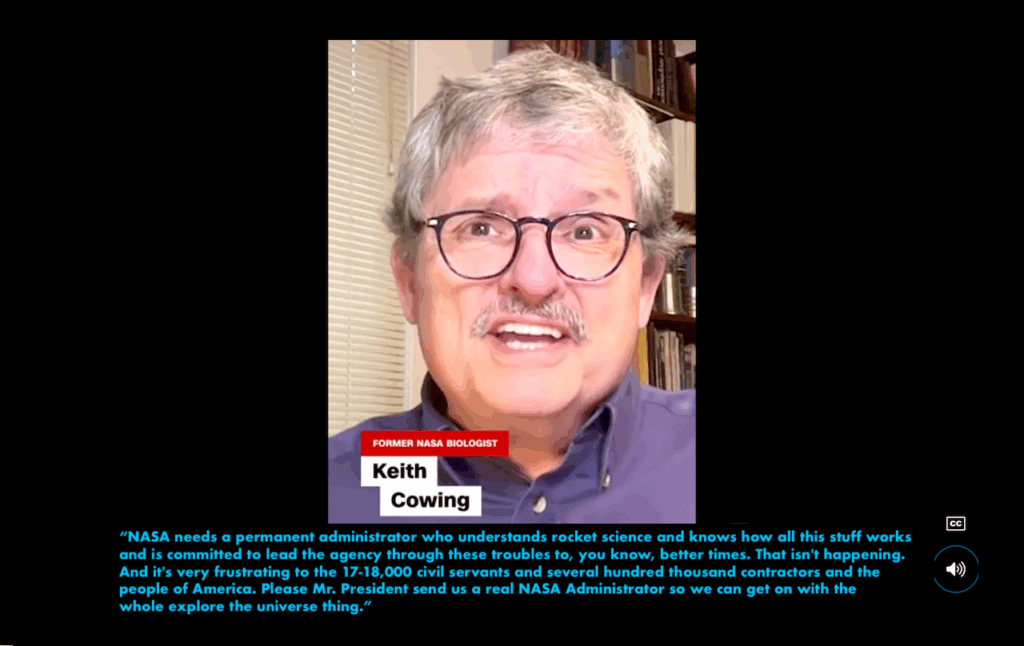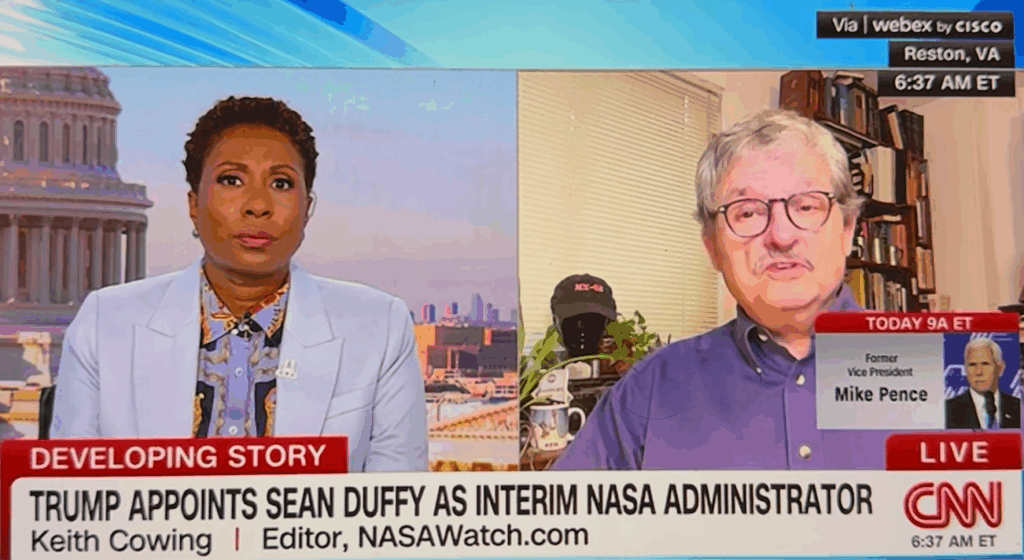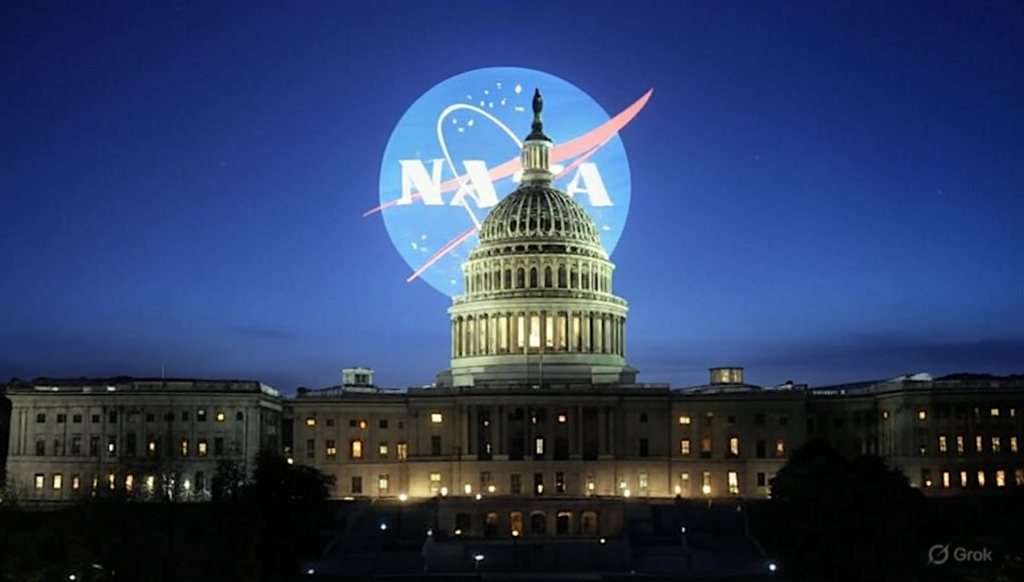Kepler Is Having Problems – But Still Has Capabilities (Update)

 Keith’s 10:03 am EDT note: Kepler is in safe mode again. Studies are under way. While Kepler’s main mission may now be at an end, there is still a lot of life left in the spacecraft. Stay tuned.
Keith’s 10:03 am EDT note: Kepler is in safe mode again. Studies are under way. While Kepler’s main mission may now be at an end, there is still a lot of life left in the spacecraft. Stay tuned.
Kepler has a telescope with 0.95 meter aperture and a wide field of view. It is in an Earth-following, heliocentric orbit. Although its fine pointing ability may no longer be available, the spacecraft still has other potential uses. One obvious use is NEO (asteroid) detection. Ideas?
NASA Hosts Kepler Spacecraft Status Teleconference Today
“NASA will host a news teleconference at 4 p.m. EDT, today, May 15, to discuss the status of the agency’s Kepler Space Telescope.”
 Keith’s 1:25 pm EDT update: The Kepler spacecraft has entered Safe Mode yet again. It is unlikely that the spacecraft will be able to resume its original extrasolar planet detection mission. NASA has uploaded Point Rest State software to the spacecraft. The Kepler spacecraft is currenty stable in Thruster-Controlled Safe Mode. In this mode it has several months of fuel available. If the spacecraft can be put into Point Rest State then the spacecraft has several years of remaining fuel. Post-prime mission options for use of the spacecraft are being pursued including NEO detection.
Keith’s 1:25 pm EDT update: The Kepler spacecraft has entered Safe Mode yet again. It is unlikely that the spacecraft will be able to resume its original extrasolar planet detection mission. NASA has uploaded Point Rest State software to the spacecraft. The Kepler spacecraft is currenty stable in Thruster-Controlled Safe Mode. In this mode it has several months of fuel available. If the spacecraft can be put into Point Rest State then the spacecraft has several years of remaining fuel. Post-prime mission options for use of the spacecraft are being pursued including NEO detection.
 Keith’s 4:25 pm EDT update: The New York Times (who claimed credit via Twitter for breaking the story 6 hours after it was broken here on NASA Watch) claims that Kepler is “crippled”. When asked if he agreed with this characterization, SMD AA John Grunsfeld called this “odd” and said that he did not agree that Kepler is “crippled” given that there are still options and other science that can be done.
Keith’s 4:25 pm EDT update: The New York Times (who claimed credit via Twitter for breaking the story 6 hours after it was broken here on NASA Watch) claims that Kepler is “crippled”. When asked if he agreed with this characterization, SMD AA John Grunsfeld called this “odd” and said that he did not agree that Kepler is “crippled” given that there are still options and other science that can be done.
NASA Kepler Mission Manager Update 15 May 2013
“With the failure of a second reaction wheel, it’s unlikely that the spacecraft will be able to return to the high pointing accuracy that enables its high-precision photometry. However, no decision has been made to end data collection.”









Is Kepler a good design for searching for Near Earth Objects (NEO)?
I accept that it, and copies, are not the perfect design but is it a viable design? A fleet of Keplers could be built and launched quickly to act as Earth defence lookouts whilst a better design is developed.
I suspect that the design for an NEO-optimized spacecraft might be somewhat different. That said, this is a case of what you do with something that still has value when its prime function is no longer available. It might provide a few insights into how future NEO spacecraft might be designed.
I’d vote for a compromise, as in looking for something akin to its prime function, but much much closer to home. As in: turn this puppy towards Alpha &/or Proxima Centauri and have it just stare at them for earth-types (super-or otherwise), until its wheels fall off (spatially speaking).
Remember, Kepler can only really see planets if the planet’s orbital plane is edge-on to the Earth– about a 1% probability, for a planet at roughly Earth distance. Since there’s a 99% chance that any planets of Alpha Centauri aren’t oriented exactly right, staring longer doesn’t help. If the planets don’t transit, Kepler can’t see them.
It gets its remarkable ability to find planets from the fact that it stares at a *huge* number of stars. Its wide field of view was designed in for a reason!
Geoff, the odds are estimated to be a bit better (10%) if the subject of the study is Alpha Centauri B b. Here’s a quote from the Alpha Centauri B b discovery paper by Dumusque et al:
“In the present case, given a stellar radius of R* = 0.863 Rsun and a one Earth radius, the planet transit probability is estimated at 10%, with a transit depth of 10-4. The detection of a potential planet transit, only possible from space, would ascertain the rocky nature of the detected planet around Alpha Centauri B.”
However, there are also other considerations! At the start of the mission, I wrote to the Kepler team and naively asked if star systems outside the Kepler field could be studied after the primary mission is over. PI David Koch was kind enough to send me a detailed answer, and he stated explicitly that I could share his answer in online groups. It might be of general interest:
David Koch’s answer:
Kepler was optimized to perform a wide field survey.If one is interested in specific targets, it is a more efficient use of resources to point dedicated telescopes at specific objects.
The plan is that if the mission is extended we would continue to point at the same field:
1. This permits looking for smaller planets based on folding the data over more transits and beating down the noise.
2. It permits us to look for planets with longer periods.
3. We spent many years and a lot of money classifying and selecting stars in the the Kepler FOV that are similar to our sun. There is no other field that has been studied to this depth in terms of magnitude limit and classification, particularly getting a handle on the luminosity class.
The short answer is, no we would not move the telescope.
You are free to post my response.
PS
Two other thoughts on way not move the FOV.
The hardware is specifically designed for the Kepler star field. The angle on the sunshade is cut for 55 deg ecliptic lat and the rotationof the focal plane relative to the solar panels was set for thelocation of bright stars.
Also, I don’t know of hand how bright your stars are, but are design spec is for stars between 9 and 15th mag.
—-End of David Koch’s answer —
So, Alpha Centauri is in the wrong part of the sky, and is too bright for Kepler. Hope this was interesting!
Yes, for planets close in to their sun, the transit probability goes way up. The Alpha Centauri B planet, at 0.04AU, is one tenth as far away as Mercury.
1% is a figure for planets at roughly Earth’s distance.
The sunshade I hadn’t considered (although I wonder if a 70-ish% protection — while not 100% — might still be acceptable. Remember this suggestion of mine is based on a spacecraft that’s about to die soon anyway. If one of its remaining wheels starts to go funny, its long-distance mission will become skewed & screwed. But if they see that coming, perhaps a closer target may extend its usefulness by another few months? (simply just a thought)
I’ll acknowledge Alpha is too bright. But Proxima is very dim red dwarf (maybe too dim?).
Actually, it’s an excellent design in terms of field of view and
aperture size for such work. The pixels are pretty big, the PSF way to
big, and the telemetry way too limited, however, for a good NEO search.
Still, the vantage point is unique and there may be some interesting
ideas…
Thank you Kepler!
Even without the precision pointing accuracy, Kepler still should have excellent photometric precision compared to most telescopes, even if you can’t keep a star in focus on a single pixel for months. It’s hard to second guess a team of engineers that have detailed knowledge of the instrument and what it’s capable of doing, but I would guess that it still would be capable of enough photometric resolution to detect larger planets, even if it’s lost the highest level of precision needed to detect the very small transits. You’d have to do a calculation to see whether you can get good enough precision, of course. You could increase precision somewhat by increasing the data volume– you want to average out pixels.
So one thought would be to aim it at a different patch of sky, and collect statistics about large planets (and variable stars, of course)– doubling the sampling statistics, even if only of large planets, would tell us a lot of useful information.
One thing to keep in mind: Even if they find a way to gather valuable science data, they are going to have trouble getting the data back to Earth. The reaction wheels were required to keep the spacecraft pointed at Earth for Ka Band science data downlink. Without fine point, all they have is Xband.
It may be a wee bit early to write it off just yet. Remember they brought SOHO back to service after months of lack of communication and off-nominal pointing toward the Sun. Kepler is stil talking to us and in a safe orientation. If there’s a way to bring it back to full data collection, they’ll find it.
Dumb question, what was the expected lengthnofnthe mission? And did anyone keep the receipt on the reaction wheels?
The original mission was schedule for three and a half years of data collection. That data collection started on May 12, 2009. So it lasted long enough to meet that schedule.
However, there was more noise in the data than expected, so it was determined that the science mission should last to 2016 in order to collect enough data that even with the noise the expected results could be obtained.
So, if, as it now seems, two reaction wheels are permanently out of action then Kepler will not be able to gather the data to give the precision of results initially planned.
Of course, even though it didn’t do as well as originally promised, it still expanded the envelope of what we know about exoplanets by a huge amount.
If this is the end of the primary mission it’s a shame but I’m very thankful we got at least the 3 1/2 years+ out of it. I’m not positive but I think we got most, if not all of the low hanging fruit and of course a whole lot of data to scrutinize forever more.
Kepler has been one of the most fascinating science instruments ever, up there with Hubble and Voyage if you ask me.
What’s going to be the successor to this great instrument? Hopefully they’ll name it Sagan.
Finally, great reporting Keith! This is why I check NASA Watch daily!
You might design the spacecraft differently if you had a cargo carrier and deep space vessel that was capable of the trip…of course you’d need a heavy lift vehicle that was good to go…Ahem
Astronomer Steinn Sigurosson has this to say about any re-purposing of Kepler: “Then the question becomes is the residual science worth $20 million in ops? I fear the answer will be No. After a politely short interval.”
This sounds like future fodder for NASAWatch – examining how the cost-benefit analysis is done, by who, how transparently, and so on.
Steinn’s excellent post is here: http://scienceblogs.com/cat…
I was also hoping for a great secondary career as a NEO hunter, but the optics were built with an intentional ‘blurr’ to optimize for photometry, not imaging… 🙁 http://kepler.nasa.gov/Miss…
Is the blur reprogrammable?